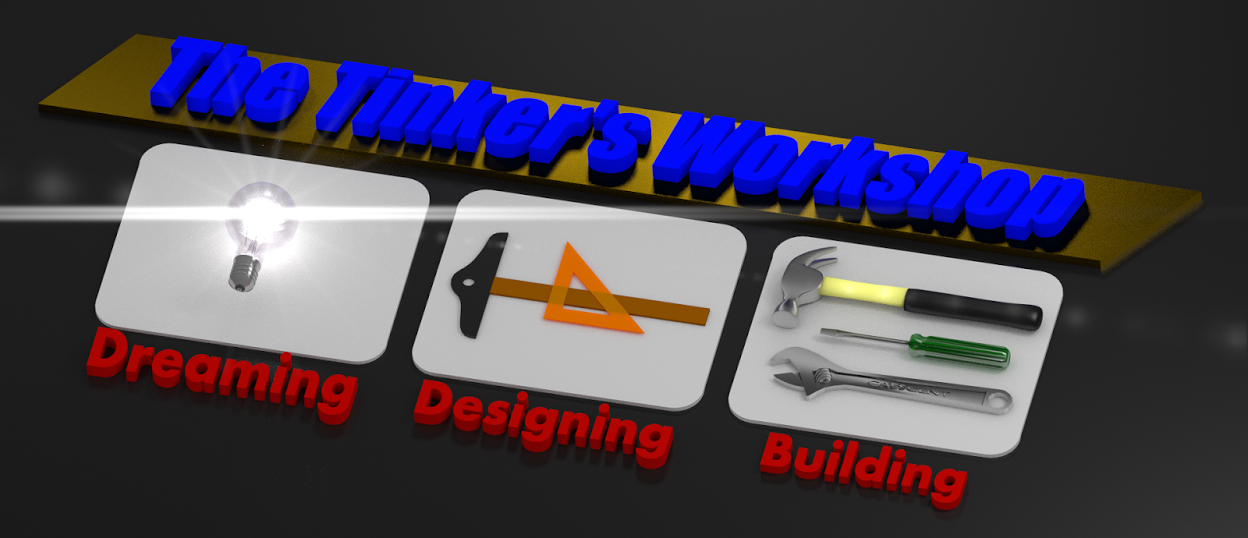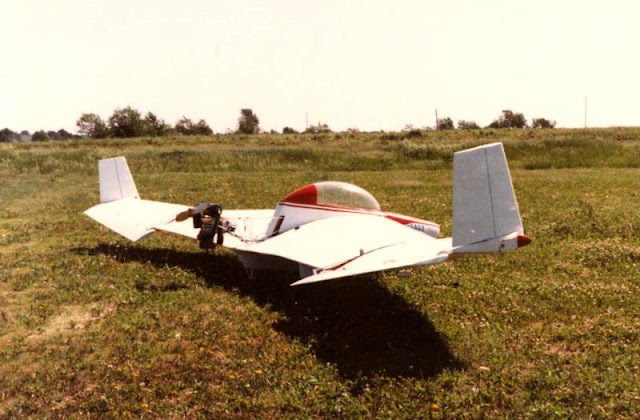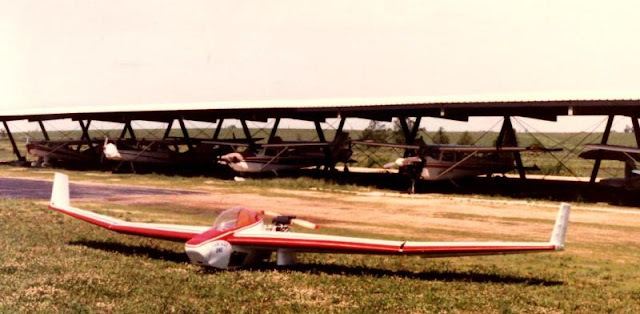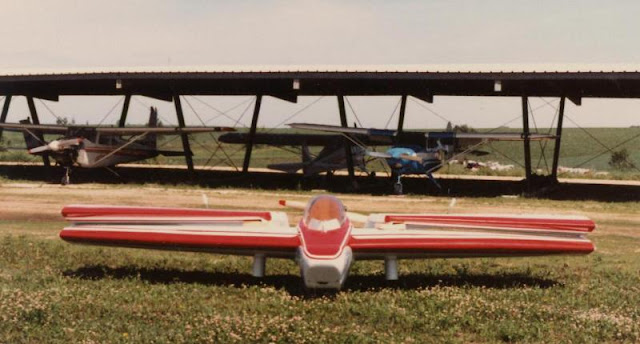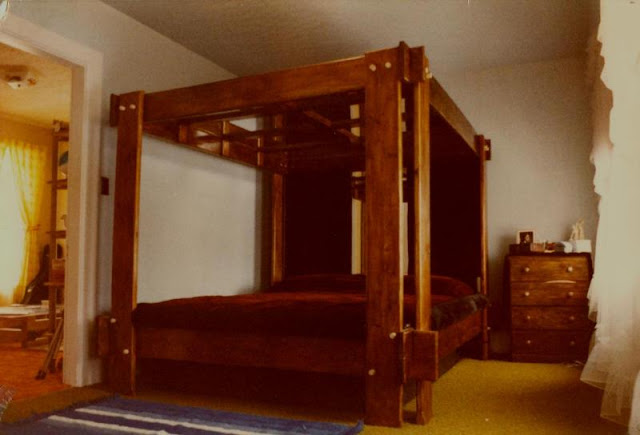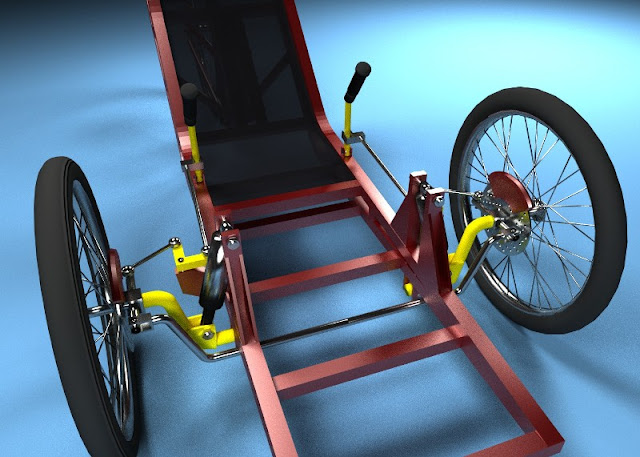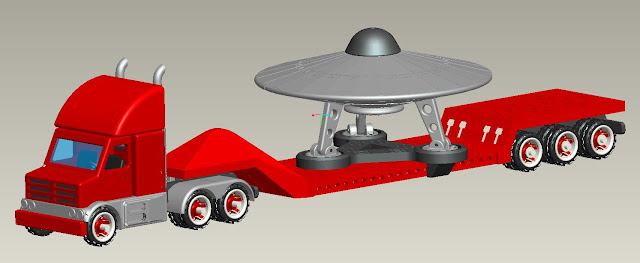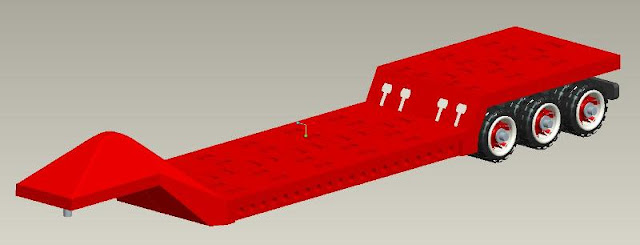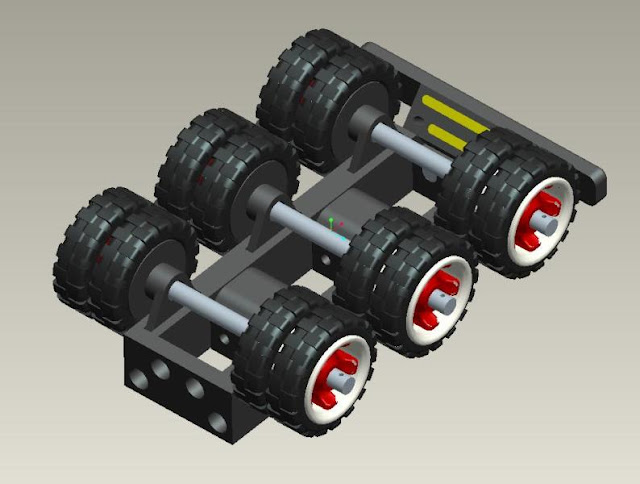During my yearly Christmas routine of putting up and taking down ornaments, trees, and various decorations I came across a folder with a lot of old photographs in it. What made this find even worth looking at was the fact that the photos were of projects that I had worked on decades ago. I thought the photos were long gone and forgotten. So to show off some very early designs long before the Tinker's workshop even was a fleeting thought I present them to you here now.
The four photos here are of the airplane that I built from 1982 to 1984. A long two years in a workshop of a friend of mine that I just recently have been in contact again with. The plane is a Mitchel U-2 and was a real project to say the least. It had a 35 foot wingspan and was of wood and cloth construction. With the wings folded up it was still eighteen feet across. The engine was a converted Zenoah snowmobile engine. Complete with instruments and electric start. A lot of people had asked me if the plane was a kit. It was a kit only in the littlest sense. If you can call a pile of wood and a set of blueprints a kit than I guess that's what it was. The only thing that I did not build on the plane was the engine, wheels, instruments, and bubble canopy. Everything else was built by hand with little or no support from the company that produced it. Was a pain at times but also one of the best projects that I ever took on. I learned a lot about airplanes and how to build them.
I never flew the plane. I just did the ground testing on the plane and then donated it to an aircraft school in southern Iowa. A lot of people are surprised that I never flew it. I simply got burned out on the project before I got that far. That and the costs to just keep it were getting higher each month it just sat in an open hangar at an airport 30 miles away from home.
I read some place about guys who build airplanes and the statistics about the subject. It stated that if 100 guys each started building an airplane only 20 of them will ever complete it. So just the fact that I accomplished that much in this project I felt good about.
This project turned out very well and took a lot less time than the airplane. I still have this beautiful cedar chest at home and have had more than just a few people want to buy it from me. The chest is four feet long, two feet from front to back, and around three feet high. It is all solid cedar that I hauled all the way from a mountain in Tennessee to Iowa and then planed down to one inch thickness. It is heavy! It takes two people to pick it up and move it.
This was built in 1985 and still looks as good as it does here. Under each wooden button is a wood screw. Over 300 were put in. A lot of drilling to say the least.
These two photos are of my drafting table that I designed and built in 1993. My son at the time was four years old and is a good indication as to how big the table is. I still have it but now is collecting dust in a storage room in my home. It is solid oak and can be completely dismantled so that it can be moved from one place to the next without a lot of hassle.
I used the table to do engineering drawings for my brother for a couple of years and then later to create British sports car pen and ink drawings for a business that I ran for seven years. That was another very successful project that actually made real money too!
This photo is of my king sized canopy waterbed that I designed and built in 1979. It took an entire day to put the bed up or take it down. So you had to figure out where you wanted it and then measured the room very carefully because you would not even want to think about moving it once it was in place. It stood seven feet tall and was made out of pine stained in oak. The waterbed as I said was king size which measured out at six feet by seven feet just for the mattress. So with the framework it now measured closer to seven feet by eight feet. It was a beautiful bed complete with a mirrored canopy but very big to be sure. I had it for a lot of years and then moved on to something a lot less time consuming to move.
All of these projects were a lot of fun to build and now that I have the Tinker's Workshop up and running it just gives me a lot more chance to work on even more and exciting projects. So keep checking in and hopefully you'll be even more entertained and encouraged to work on some ideas that you have been putting off in your own workshop.
The four photos here are of the airplane that I built from 1982 to 1984. A long two years in a workshop of a friend of mine that I just recently have been in contact again with. The plane is a Mitchel U-2 and was a real project to say the least. It had a 35 foot wingspan and was of wood and cloth construction. With the wings folded up it was still eighteen feet across. The engine was a converted Zenoah snowmobile engine. Complete with instruments and electric start. A lot of people had asked me if the plane was a kit. It was a kit only in the littlest sense. If you can call a pile of wood and a set of blueprints a kit than I guess that's what it was. The only thing that I did not build on the plane was the engine, wheels, instruments, and bubble canopy. Everything else was built by hand with little or no support from the company that produced it. Was a pain at times but also one of the best projects that I ever took on. I learned a lot about airplanes and how to build them.
I never flew the plane. I just did the ground testing on the plane and then donated it to an aircraft school in southern Iowa. A lot of people are surprised that I never flew it. I simply got burned out on the project before I got that far. That and the costs to just keep it were getting higher each month it just sat in an open hangar at an airport 30 miles away from home.
I read some place about guys who build airplanes and the statistics about the subject. It stated that if 100 guys each started building an airplane only 20 of them will ever complete it. So just the fact that I accomplished that much in this project I felt good about.
This project turned out very well and took a lot less time than the airplane. I still have this beautiful cedar chest at home and have had more than just a few people want to buy it from me. The chest is four feet long, two feet from front to back, and around three feet high. It is all solid cedar that I hauled all the way from a mountain in Tennessee to Iowa and then planed down to one inch thickness. It is heavy! It takes two people to pick it up and move it.
This was built in 1985 and still looks as good as it does here. Under each wooden button is a wood screw. Over 300 were put in. A lot of drilling to say the least.
These two photos are of my drafting table that I designed and built in 1993. My son at the time was four years old and is a good indication as to how big the table is. I still have it but now is collecting dust in a storage room in my home. It is solid oak and can be completely dismantled so that it can be moved from one place to the next without a lot of hassle.
I used the table to do engineering drawings for my brother for a couple of years and then later to create British sports car pen and ink drawings for a business that I ran for seven years. That was another very successful project that actually made real money too!
This photo is of my king sized canopy waterbed that I designed and built in 1979. It took an entire day to put the bed up or take it down. So you had to figure out where you wanted it and then measured the room very carefully because you would not even want to think about moving it once it was in place. It stood seven feet tall and was made out of pine stained in oak. The waterbed as I said was king size which measured out at six feet by seven feet just for the mattress. So with the framework it now measured closer to seven feet by eight feet. It was a beautiful bed complete with a mirrored canopy but very big to be sure. I had it for a lot of years and then moved on to something a lot less time consuming to move.
All of these projects were a lot of fun to build and now that I have the Tinker's Workshop up and running it just gives me a lot more chance to work on even more and exciting projects. So keep checking in and hopefully you'll be even more entertained and encouraged to work on some ideas that you have been putting off in your own workshop.
